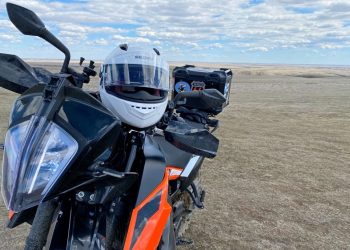Motorcycle theft is a problem, and it’s one that we can all take steps to solve. In this guide, we’ll walk you through the different types of theft that occur on motorcycles and give you tips on how to prevent them.
Motorcycle theft statistics
You may be surprised to know that motorcycles are stolen more often than cars, trucks and SUVs combined. Here are some statistics on motorcycle theft from the National Insurance Crime Bureau (NICB):
- In 2016 alone, there were more than 28,000 motorbike thefts reported in the United States. This is an increase of 6 percent over 2015’s figure of 26,358.
- Motorcycle theft occurs most frequently during summer months and between 2:00pm and 8:00pm on Sunday afternoon/evening hours. It may seem like a good idea at first glance but when looking closer into this stat it becomes clear why this is; people who own motorcycles tend to ride them less during winter months so they aren’t as familiar with their bikes or how they work which makes them easier targets for thieves who know what they’re doing when it comes down to stealing one!
National Insurance Crime Bureau (NICB)
The NICB is a nonprofit organization that works with law enforcement and insurance companies to fight vehicle crimes. The organization has been around since 1972 and has a database containing information on more than 10 million reported stolen vehicles in the United States and Canada.
Stolen motorcycles are categorized in the same manner as other types of automobiles: by year, make, model, color, style (convertible), engine type (two-stroke or four-stroke gasoline engines), transmission (5-speed manual vs. automatic transmission), etcetera. The data collected from these reports helps law enforcement identify patterns when it comes to car theft—information which can be used for prevention efforts or investigations into current cases involving stolen cars or motorcycles.
National Motor Vehicle Theft Prevention Program
The National Motor Vehicle Theft Prevention Program (NMVT) is a voluntary, public/private partnership between the Department of Justice and NHTSA. The program’s goal is to reduce vehicle thefts by encouraging manufacturers to incorporate theft prevention devices into new vehicles. This initiative was created in 1973 by the President’s Crime Commission and involves a cooperative effort between the Department of Justice, NHTSA and insurance industry representatives.
Federal Bureau of Investigation (FBI)
The FBI is the lead federal agency for investigating motorcycle thefts. The bureau has a National Motor Vehicle Theft Prevention Program, which aims to reduce motorcycle theft by providing information to law enforcement agencies and the public. The program also provides training for investigators, prosecutors and victim advocates; conducts research into stolen vehicle databases; works with industry organizations; and coordinates with state and local law enforcement agencies.
Most Stolen Motorcycles Of 2022
According to the National Insurance Crime Bureau (NICB), there were over 172,000 motorcycles reported stolen in America in 2018.
This number includes both street and dirt bikes, scooters, and touring bikes. It doesn’t include two-wheelers that were lost or damaged due to natural causes like accidents or vandals.
To make matters worse: many of those stolen bikes never get recovered. The NICB reports that only about one in every four motorbikes that are taken from their owners ever make it back home safely again!
Top 5 Cities With The Most Motorcycle Thefts In 2022
While the most common place to find a motorcycle theft is in Los Angeles, Texas has four of the top five cities. Houston and San Antonio are tied for second place with 553 stolen motorcycles each and Chicago comes in third with 501. New York City isn’t far behind at 498 thefts either!
How Do Thieves Steal Motorcycles?
While motorcycles are often stolen when left unattended, there are other ways thieves can get their hands on your bike. Some of these methods include:
- Stealing from a garage
A full third of all motorcycle thefts happen within a garage or other enclosed structure. If you store your motorcycle in a garage and the door isn’t locked, that’s an open invitation for thieves to come in and take what they want. If this is something you’re worried about, invest in good security measures like window bars and locks for the doors to deter would-be thieves from entering through those doors without permission.
- Stealing while riding
While some people take precautions against theft by covering their bikes with tarps or locking them up when they step away from their bikes, others do not take these precautions seriously enough—and they pay the price when their bikes are stolen while they’re still riding them! Prevent this kind of thing from happening by using chain locks on your bike’s wheels so it cannot be moved without breaking the chain first; keeping an eye out for anyone lurking about near where you’ve parked; locking up at every stop along your route; thinking twice before leaving any valuables visible inside (or outside) your vehicle; etcetera! If something seems off about any given situation—even if nothing seems off at first glance—it’s always better safe than sorry!
Ways To Avoid Motorcycle Theft
- Lock your ignition. In most cases, the owner’s manual will direct you to do this.
- Keep your motorcycle in a garage. The more protected it is from the elements and prying eyes, the better. If you don’t have access to a garage, consider investing in one or at least keeping a lock on your garage door so people can’t easily enter and steal from inside of it.
- Install a GPS tracker on your bike so you can find out where it went if it does get stolen (and hopefully find who stole it).
- Get wheel locks or disc alarms for extra security so thieves won’t be able to take off with your wheels as easily—which means they’ll have less chance of riding away from the scene unnoticed! Wheel locks are easier since they don’t require any wiring like an alarm would; just buy them at any automotive store near where you live and install them yourself!
Invest in a wheel lock or disc alarm.
Wheel locks and disc alarms are both effective at preventing a bike from being stolen. However, wheel locks are better than disc alarms for several reasons:
- They’re more secure, since they keep the wheels in place while a thief tries to disconnect them.
- They’re easier to install yourself, so you can do it without needing a mechanic or locksmith’s help (which is especially helpful if you don’t have any money).
- Disc alarms are more expensive than wheel locks and may require professional installation if you don’t know how to install them yourself
Lock your ignition.
The bike’s ignition is the most common place for thieves to attack. To protect your ignition, use a motorcycle lock at all times.
There are many different kinds of motorcycle locks. For example:
- A motorcycle chain lock will keep the thief from stealing the bike and dragging it away from you.
- A motorcycle disc lock can stop thieves from breaking into your disc brakes and making off with them.
- A motorcycle wheel lock will prevent anyone from stealing your wheels and running off with them—a common method used by professional criminals who have access to large vans or trucks.
- A steering locking device makes it impossible for a thief to turn your handlebars so they can drive off unnoticed on their stolen vehicle while you’re still sitting on it
Keep your bike in a garage.
If you have a garage, or even just a carport, storing your motorcycle in it is a great way to protect it from theft. Thieves are less likely to break into an enclosed space and are more likely to move on to easier targets. Not only that, but garages often come with locking doors and windows that will help keep your bike safe while you’re away.
If your garage doesn’t have any locks on the door itself (and most don’t), invest in some type of extra security mechanism. Chain up the door with alligator clips or padlocks; use large bolts; drill into the frame of the garage itself—whatever applies best for your situation will work here!
Install a GPS tracker on your bike.
Security systems aren’t typically a priority for motorcyclists, but there’s no reason why you shouldn’t install one on your bike. A GPS tracker is a great way to keep an eye on your bike if it gets stolen or taken somewhere without your permission. They’re easy to install and can be removed quickly, which makes them ideal for bikes that are often parked in public areas like parking garages or street corners.
GPS trackers start at under $100 and can be easily installed by anyone with basic mechanical skills. If you have any doubts about whether or not installing a tracker will prevent theft, consider this: many police departments recommend them as part of their anti-theft programs!
Theft is one of the most common causes of motorcycle loss, costing us more than $150 million in claims each year. Here’s how to keep your ride safe and sound.
- Be sure to secure it.
- A wheel lock or disc alarm can help deter thieves from stealing your bike, but these are no substitute for a good lock and chain. Make sure to lock the chain through both rear wheel spokes and frame, as well as through a light pole or other immovable object. If you have a motorcycle cover, use it! Don’t leave your keys in an unlocked garage—the thief will likely bypass them and just take the whole thing instead of taking the risk that they don’t work on another bike (or if they’re going after older models).
If you’re looking for more ways to keep your ride safe and sound here’s what we recommend:
- Talk with us about adding GPS tracking devices like LongTrak GPS Tracker or Lawmate Vehicle Tracker so we can find it if it’s stolen! Plus some insurance companies offer discounts on policies when you install one of these systems on your bike.* Consider installing security systems like those offered by OnGuard Security Systems Inc on all of your vehicles including motorcycles because there is often no way of knowing whether someone has tampered with them unless there is an alarm system connected which notifies authorities immediately when triggered so that police officers can respond quickly.* Keep bikes locked inside garages where possible; at least make sure nothing else valuable is left unattended outside unprotected by locks.* Once again, always remember: The most important thing is keeping things locked up tight—especially if they could potentially attract attention from thieves.”
Conclusion
We hope that you’ve found this article informative and helpful. We want to ensure that you have the best experience possible with your motorcycle, no matter what kind of rider you are or where your journey takes you. If not, we encourage you to reach out to us so we can help!



